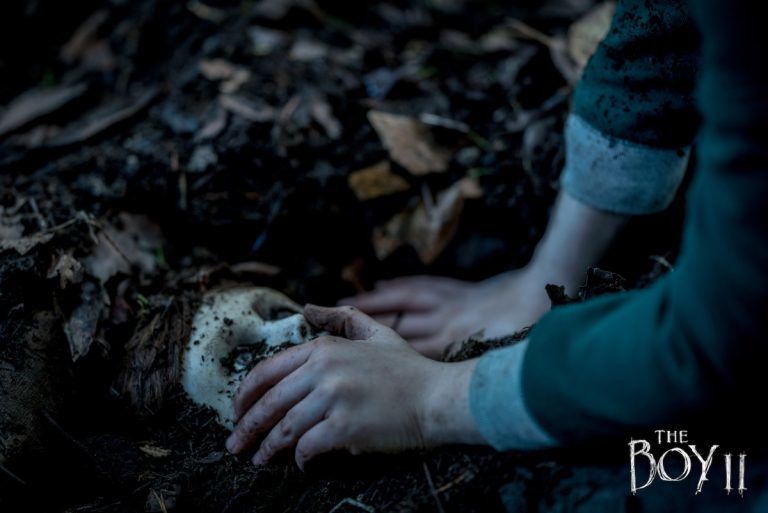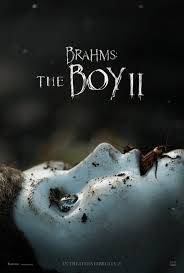
We love movies about haunted artifacts and apparently so do millions of people. There is just something about an evil spirit trapped inside an inanimate object when it causes suffering and chaos to the unfortunate owner that is so mysteriously macabre.
We Really Like Katie Holmes (But Not in Horror Movies)
Laura Cohen was the central character of The Boy (2016) and she had already mastered horror after playing Maggie in The Walking Dead (2010 – ). As a horror actress, she’s an instant hit, because she brings a sort of fearless badassery that makes us believe she is experiencing authentic terror. When Cohen is scared, we are scared. This is something that Katie Holmes has not quite mastered because horror is not really a genre that fits her profile or range.
It takes someone who loves horror to act with believable fear in a horror movie. Laura Cohen had more than a decade of that experience as she was slaying zombies on-screen every week. She has the survivor chops that someone like Katie Holmes cannot quite muster in a scary movie. She does, however, play a really awesome victim who is being stalked by a psychopath, but even her performance in the 2002 movie Abandon was panned by critics. Katie Holmes is not someone we want to see in a horror movie; she belongs in forty-something adult romantic comedies or suspense movies.
Brahms: The Boy II is not the first horror movie that Katie Holmes has been cast in, which is kind of strange since we feel that she’s not really the kind of person you want to see fighting in a life or death situation with a demonic entity. Holmes also appeared in “Don’t Be Afraid of the Dark”, “Teaching Mrs. Tingle” and “Disturbing Behavior”, which do not top the list of truly scary movies. More like, the kind of scary movies you watch with your mom who hates horror movies. Watered down. Decidedly un-scary.
We wondered if Katie Holmes was a closeted horror fan. Was she someone that had a massive collection of every horror movie ever made? Did she snuggle on the couch with Jamie Foxx with a big ass bowl of popcorn and watch The Exorcist for the 100th time? There has to be a reason why she seems to get cast into horror roles right? Is she asking for work in the genre, without knowing she would be a better fit on feel-good shows like a Gilmore Girls reboot?
Apparently, she does love horror, but her inspiration for the movie was communicating the vulnerability of Liza, the mother of Jude (played by the talented Christopher Convery). In several interviews Holmes has said she wanted to show the protective nature of a parent, and she nailed that (tapping into her own real-life experiences). But while she states in several interviews that Brahms: The Boy II will ‘have you on the edge of your seat terrified” the truth is that the scariest scenes barely involve Holmes at all. That is not where the few (but impactful) terror moments in the movie come from.
A High-Quality Scary Movie Which Pales in Comparison to the First Iteration “The Boy”
There is a checklist of cinematic techniques and storytelling that make for a good (but maybe not great) horror movie. Real fans of the horror genre and writers are able to see these commercial cookie cutter elements that are (unfortunately) a predictable and repetitive recipe for mainstream scary movies.
- At least one A-list actor to ensure audience enticement
- A scary filming location (the Craigdarroch Castle in Victoria, British Columbia Canada)
- Eerie but pristine old looking wooded areas
- Creepy doll
- An older historian type figure who connects the dots for the family with facts they were not aware of about the house, and the doll
- A dog that can sense the malevolent spirit is brutally killed (we hate this by the way but understand the psychological trigger of including it in the plot). Cheap shot.
- A strained marriage because of [insert trauma type] that makes the protagonist feel like he/she may be going insane as they start to witness paranormal behaviors
- The injury of a child playing with the possessed or influenced child, within the geographic influence of the haunted artifact.
- A male partner who thinks the female protagonist experiencing paranormal is hormonal or possibly insane. (We love it when horror writers throw in the ‘female is batshit crazy’ card… thanks.)
Sounds familiar right? With very few exceptions and breakout moments of script and storyline originality, Brahms: The Boy II feels like a movie we have seen before. Time and time again.
We cannot call it ‘horror’ because we were not afraid to go into the basement with the lights off, after watching the movie. We did not feel the need to sleep with the closet light on, and we had no bad dreams after watching Brahm: The Boy II. It made us jump a few times which was fun, but it failed to penetrate into that squishy psychological area of our brain which makes us think about the movie for days afterward. Zero trauma. We were disappointed.
Hollywood horror producers, if you are looking for some talented writers in the genre, we have a long list of talented horror creatives. Just in case, you know, you are actually looking for some truly terrifying novels to adapt to the kind of horror movies we want to see.
REAL. SCARY. HORROR.
Brahms: The Boy II is Less Intense and Terrifying Than “The Boy”
At time of publishing “Brahms: The Boy II was out in the theaters (hello pandemic, not that we can actually go see it or anything… anyone else missing hot pretzels and insanely large sodas?). We went to Redbox on Demand and found that it was not yet available for rent, but we could buy it for $9.99. So, we did.
In the first film The Boy, we see a much more violent and malevolent demonic presence and influence in the doll. Yep, we are Maggie fans, because the talented Laura Cohen makes you feel the same fear she is experiencing. By comparison to Liza, played by Katie Holmes, we have a ‘concerned mother’ who feels a little slow moving to connect the dots.
The trauma is to blame? Maybe, but Holmes comes across as the kind of Mom that is distracted (not distraught), and definitely not the horror movie hero we want her to be in the movie. She comes across as being too nice, like a Mom you would like to invite to your wine and book club. This movie and storyline based on the original had so much potential, and literally falls on its face. Great cinematography however and some amazing camera angles, set and performances by other new and supporting actors in the film.
The creepy factor of Brahms activities are really limited to moving his head, footsteps in the hall (or up the stairs), slamming doors and one particular scene with a flashlight that we won’t ruin for you. But overall, the dolls behavior in this sequel is pretty tame when you compare it to his epic and eerie malice in “The Boy”.
For the record, we REALLY wanted to see this movie. We paid $10 to watch it at home! We wanted it to be a fun and scary experience but ended up watching something scarier after the movie was over. My 14-year old stepson (who is only toe dipping into the genre with books and movies) said it best:
“That wasn’t really a scary movie. Can we watch something scary next?”
Go back to what worked in the first film. We look forward to the potential twist of storyline in The Boy 3.
Definition of Lunchbox Let Down: When your mom tells you that she packed something extra special for your lunch. And you get all excited about it, until you open it on the bus and find a peanut butter and jelly sandwich, a bottle of water, and an apple.

Release date: February 21, 2020 (USA)
Production company: Lakeshore Entertainment
Distributed by: STX Films
Run time: 86 minutes
Image: Theatrical release poster
Feature Image Source: Exhibitor Relations Co. 2 – Box Office Boogaloo
Generation X gamer girl, marketing professional and closet horror writer. Lover of fast moving horror movies, slow moving zombies and historically based paranormal lore.

